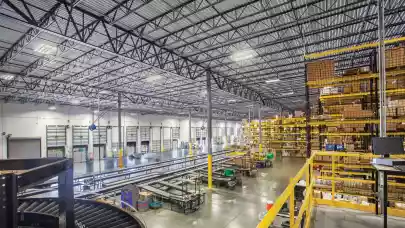
According to the 2024 Savills Nearshoring Index study, the Czech Republic is the second most attractive location for industrial occupiers looking for ‘nearshore’ supply chains.
Portugal ranks first, Poland in third place, Sweden fourth, and Japan in the top five, followed by Singapore, Canada, South Korea, Spain, and the United Kingdom closing the top ten. Savills 2024 Nearshoring Index ranks 26 countries on the factors that may be important to occupiers looking for new locations to shorten or diversify their supply chains and/or reduce their reliance on imports. These factors include their resilience, economic cost (including rents, energy and labour costs), business environment and ESG performance. Savills says that depending on occupiers’ priorities, other locations further down the Index may be preferred, such as those where costs may be higher but have stronger environmental credentials and a better business environment, whilst others may perform exceptionally well but only in one pillar.
Traditionally low-cost hubs were the largest beneficiaries of the original wave of offshoring, as occupiers prioritised cost. With the impacts of supply shocks and an increased focus on ESG performance, many are now weighing other factors in their decision-making process, although budgets are still a major driving force.
“Locations that score well in the Nearshoring Index’s economic cost pillar, however, don’t tend to score as highly for resilience, business environment and ESG. The exceptions are Poland, Portugal and the Czech Republic, which provide a rare combination of being low cost, resilient, and provide occupiers with access to the European single market,” says Ondřej Míček, Head of Industrial Agency at Savills Czech Republic.
Charlotte Rushton, Analyst at Savills World Research, comments: “When nearshoring began to emerge, there were concerns of a wholesale global supply chain upheaval. What has occurred so far, is more subtle: manufacturing trends show that although companies are setting up in new locations, they’re still prioritising reducing costs, favouring locations such as Mexico and Vietnam. But there are exceptions: some manufacturing, such as semiconductors, electric vehicles and energy, is more sensitive to geopolitics and trade policy, so occupiers here tend to prioritise higher-skilled and higher-valued production, and therefore favour locations such as Sweden, the UK and the US.”




